TQ is returning. While I get some things sorted out, this is the first of a number of posts that I wrote and then failed to upload. This is from February 2016! The text below is from then, not now. And even then it was an old draft!!
I've been very busy at work, so apologies for the lack of posts of late. However, a slight hiatus in having stuff to post about means that I can finally finish off something that's been lying in my "drafts" folder for, literally, years...
The last 15mm figures I painted were Chileans from the South American Wars of Independence, back in 2011 (see
here). I had long admired John Fletcher's "Liberators" project and the figures he has released under his Grenadier Productions label. So I bought some packs and painted these chaps. Then, like so many other things, the project rather stalled. No reason in particular - it was always something I intended to return to. Then 25mm figures for the period came along - from
Parkfield and then
Orinoco Miniatures. While I painted a lot of 15mm Napoleonics in my youth and earlier days in the hobby, I've been pretty much exclusively a 25mm painter for the past 15 or so years. The Liberators project remained of interest to me - it fits in with my like of slightly out of the way periods. So a couple of years ago I bought some Orinoco figures on spec and was delighted with the way they turned out.

This post isn't the place for an in depth history of the Wars of South American Liberation. Armed insurrection began in 1806 and gathered pace over the next few years. The end of the Napoleonic wars enable Spain, the colonial power, to transfer reinforcements from Europe and reconquer territory in modern Venezuela and Colombia that the Patriots had liberated. By 1817, Simon Bolivar was in need of more men for his Patriot armies and send agents to Britain and Ireland to tap into the large numbers of men who had been de-mobilised as a result of the final defeat of Napoleon. As with the First Carlist War twenty years later, there were plenty of men keen to seek employment and/or adventure, and between 1817 and 1819 over 6,000 English and Irish troops travelled to South America to fight for the Patriot cause. John Fletcher has identified over 25 distinct units, but many of these were amalgamated or dissolved early on. In some cases disease and mutiny rendered units ineffective soon after arrival in South America. The formations that did survive were brigaded into what became known as the British Legion and the Irish Legion.
The unit pictured here is the 2nd Light Infantry Regiment of the Irish Legion, nicknamed "Cundinamarca", presumably after the district of northern Colombia in which the legion found itself in late 1819. The Irish Legion was ready to commence operations in early 1820 and The regiment was part of an expedition to Riohacha in 1820. Information about precisely what uniform these troops wore is patchy. The Irish Legion generally was reported to have worn green tunics, although it is quite likely that formal uniform issues never took place or, if they did, the clothes suffered wear and tear very quickly and the men therefore wore whatever thy had to hand. I've added a mix of trouser colours and patches to reflect some "campaign" dress. So this uniform is rather conjectural, and I can't recall why I painted the shako covers white rather than black; I must have been thinking about Napoloenic Nassau infantry at the time! The flag is one of a pair sold by Flags of War.
20 figures. Painted August-September 2013. Flag by Flags of War.
.JPG)
.JPG)
.JPG)
.JPG)
.JPG)
.JPG)
.JPG)
.JPG)
.JPG)


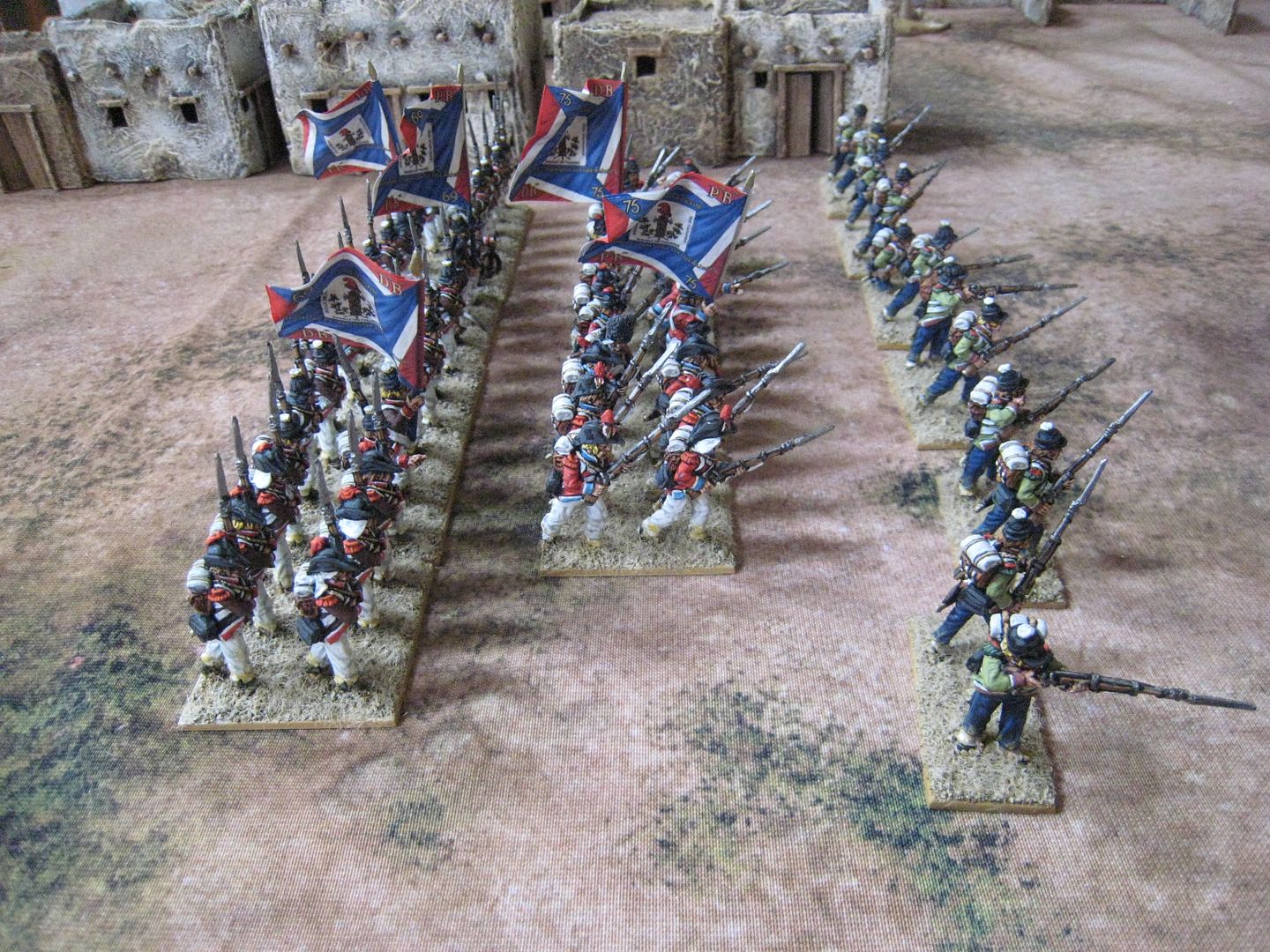
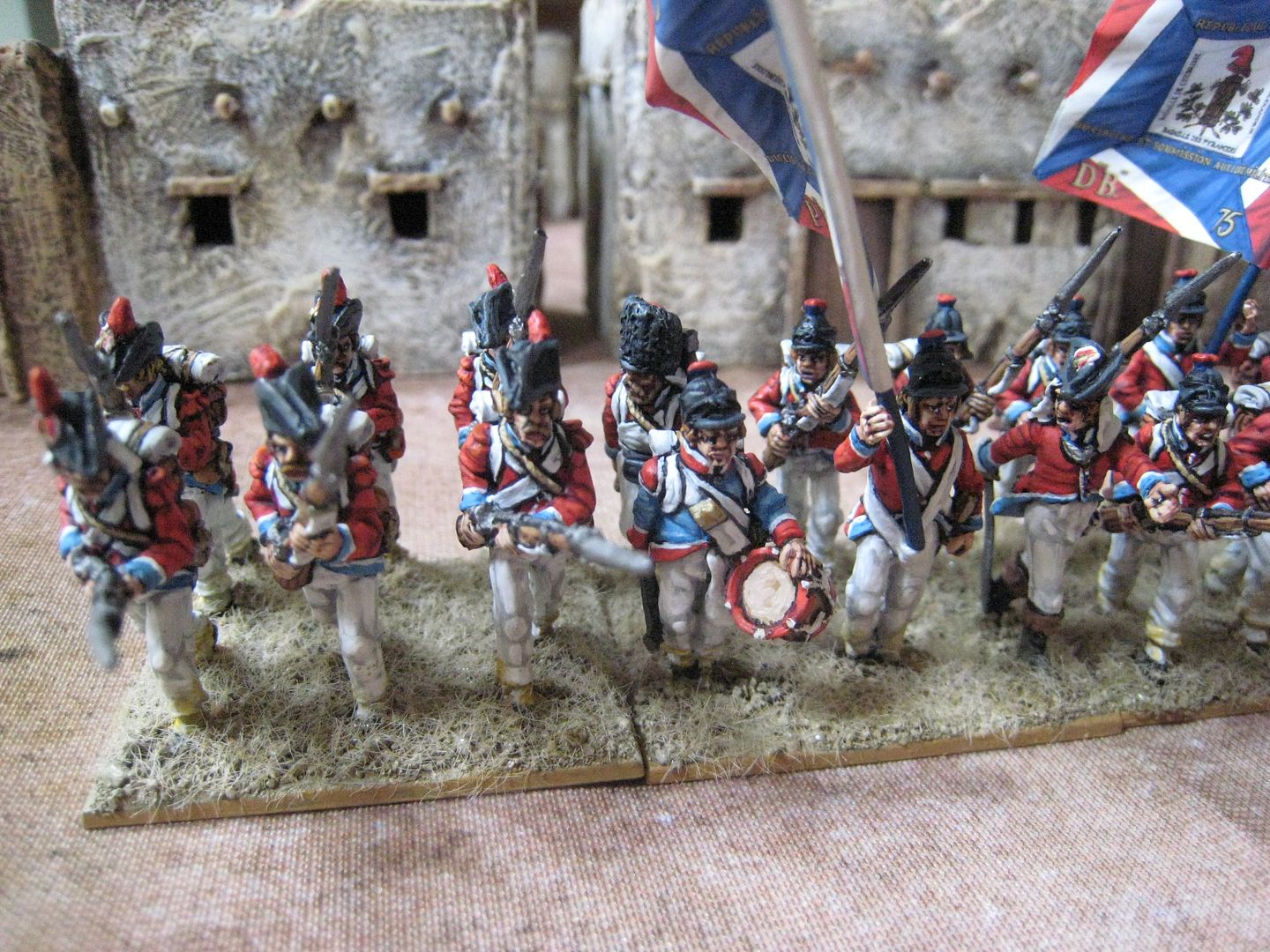
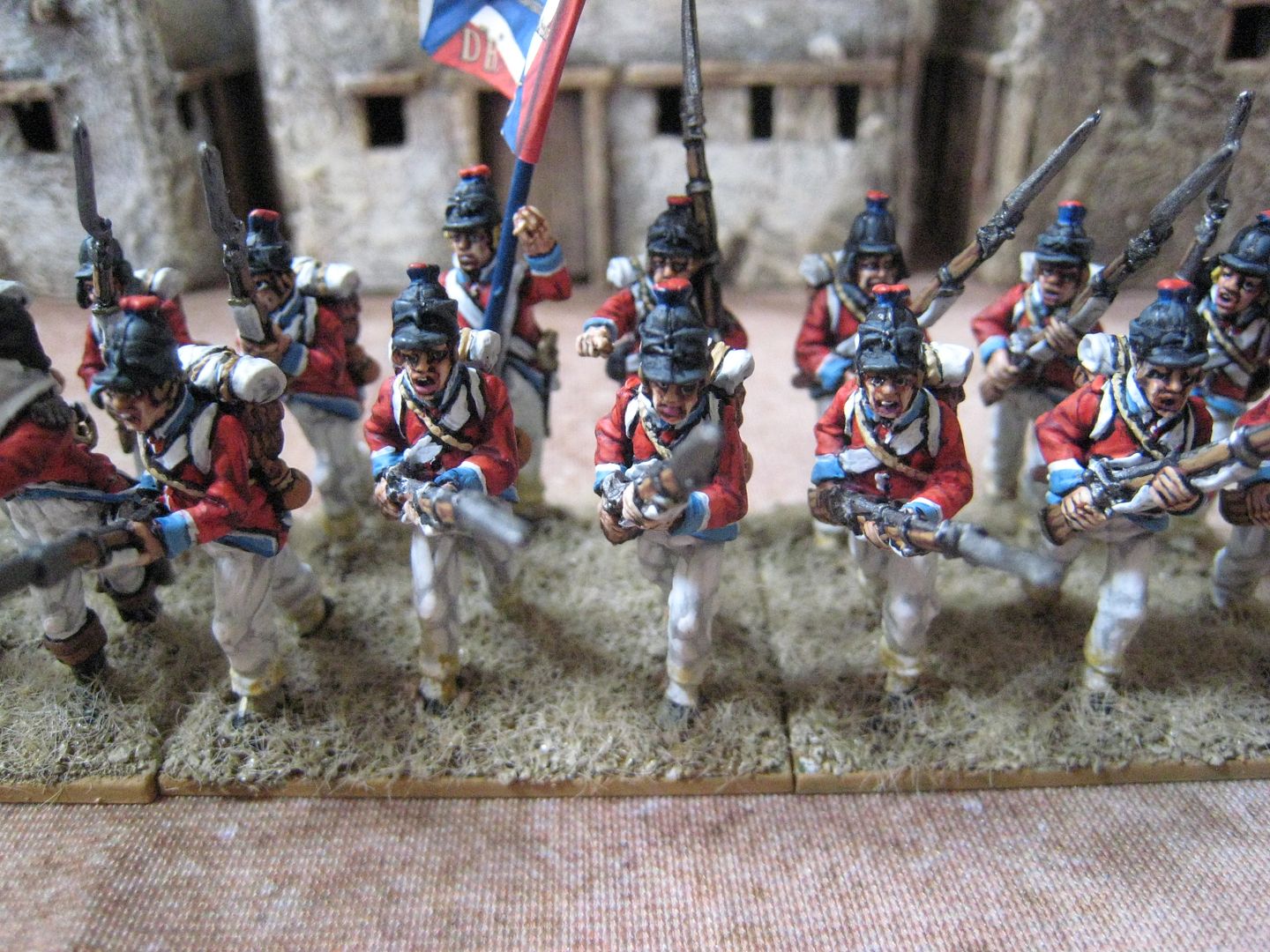
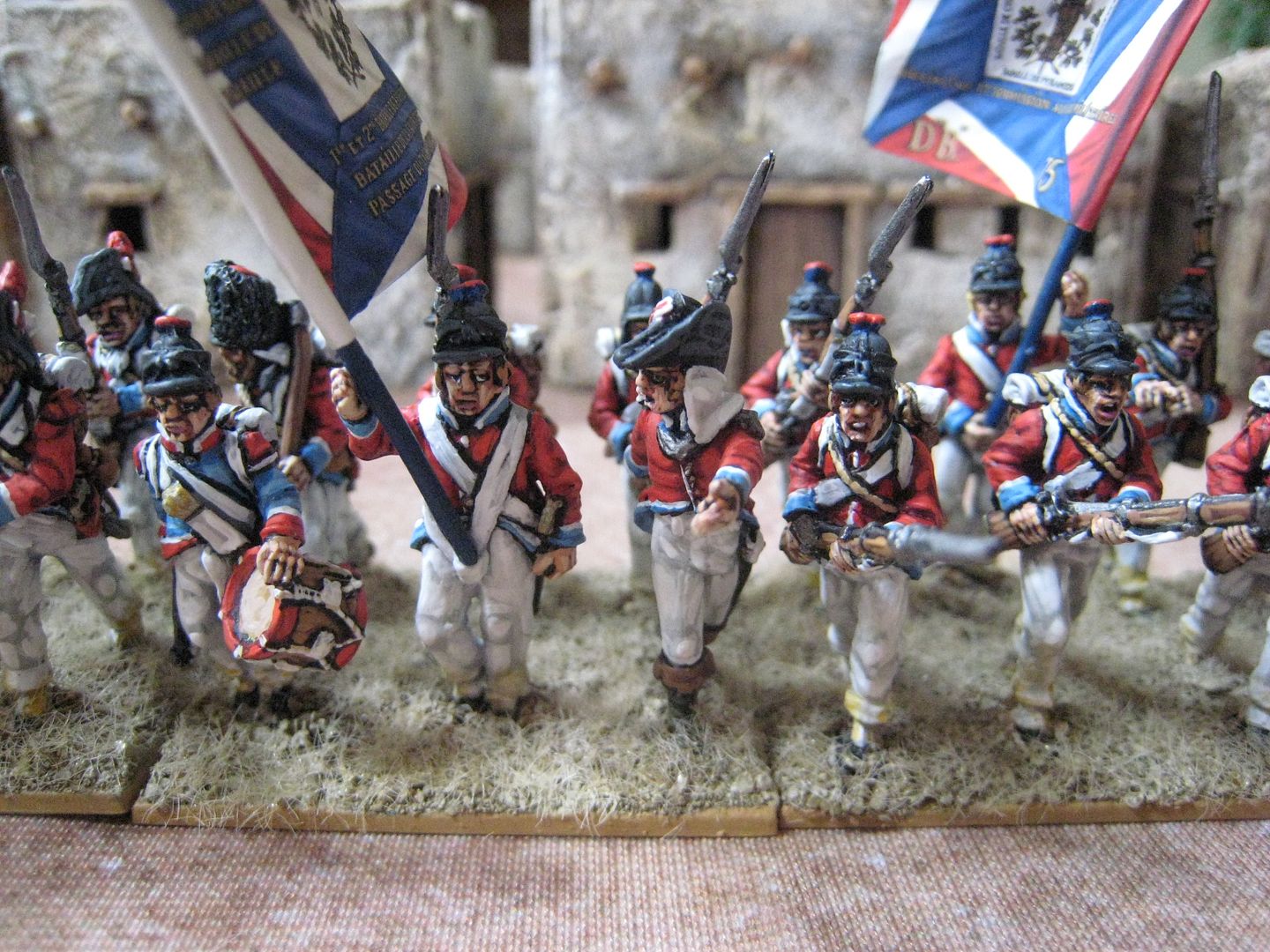
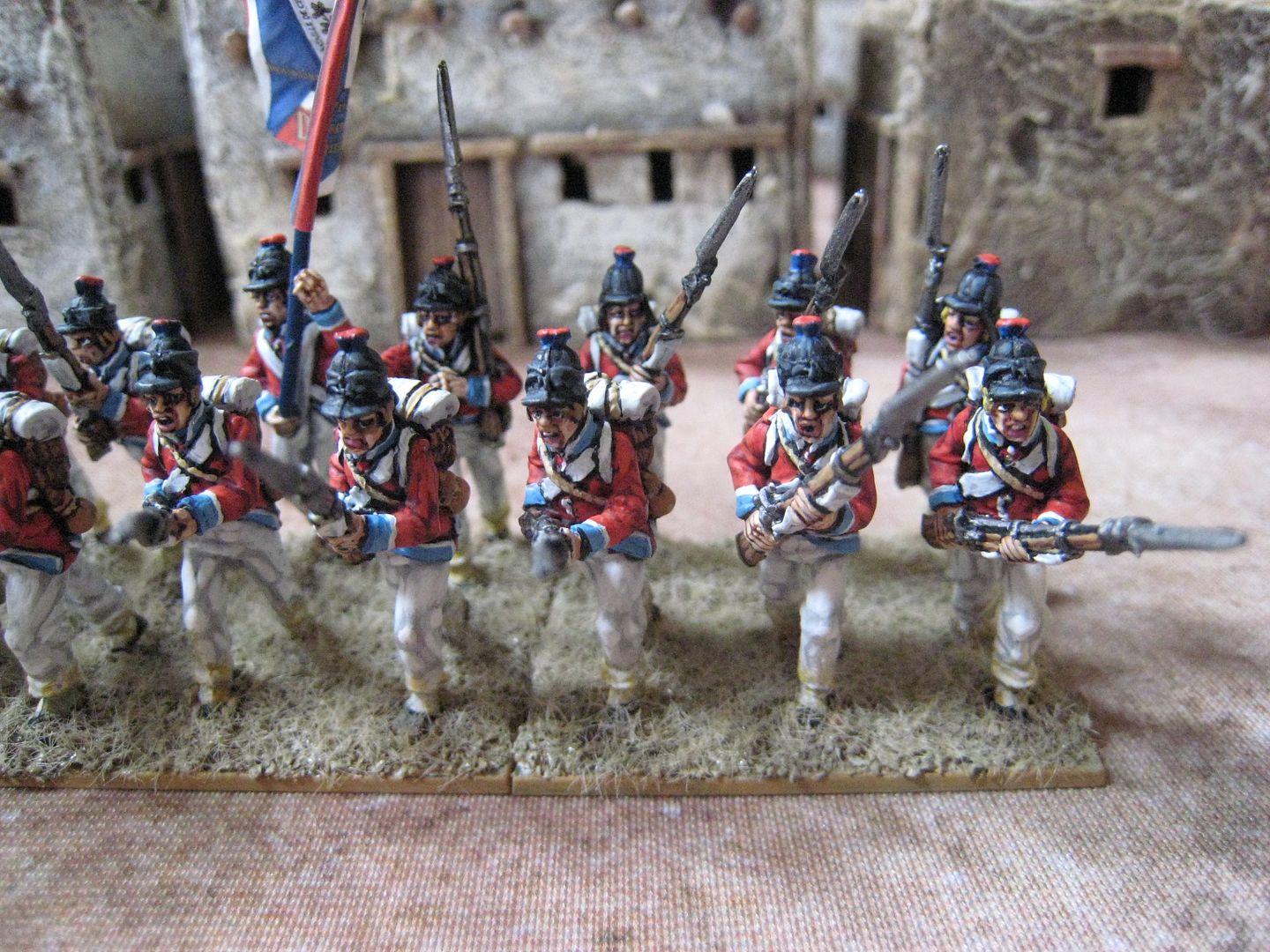

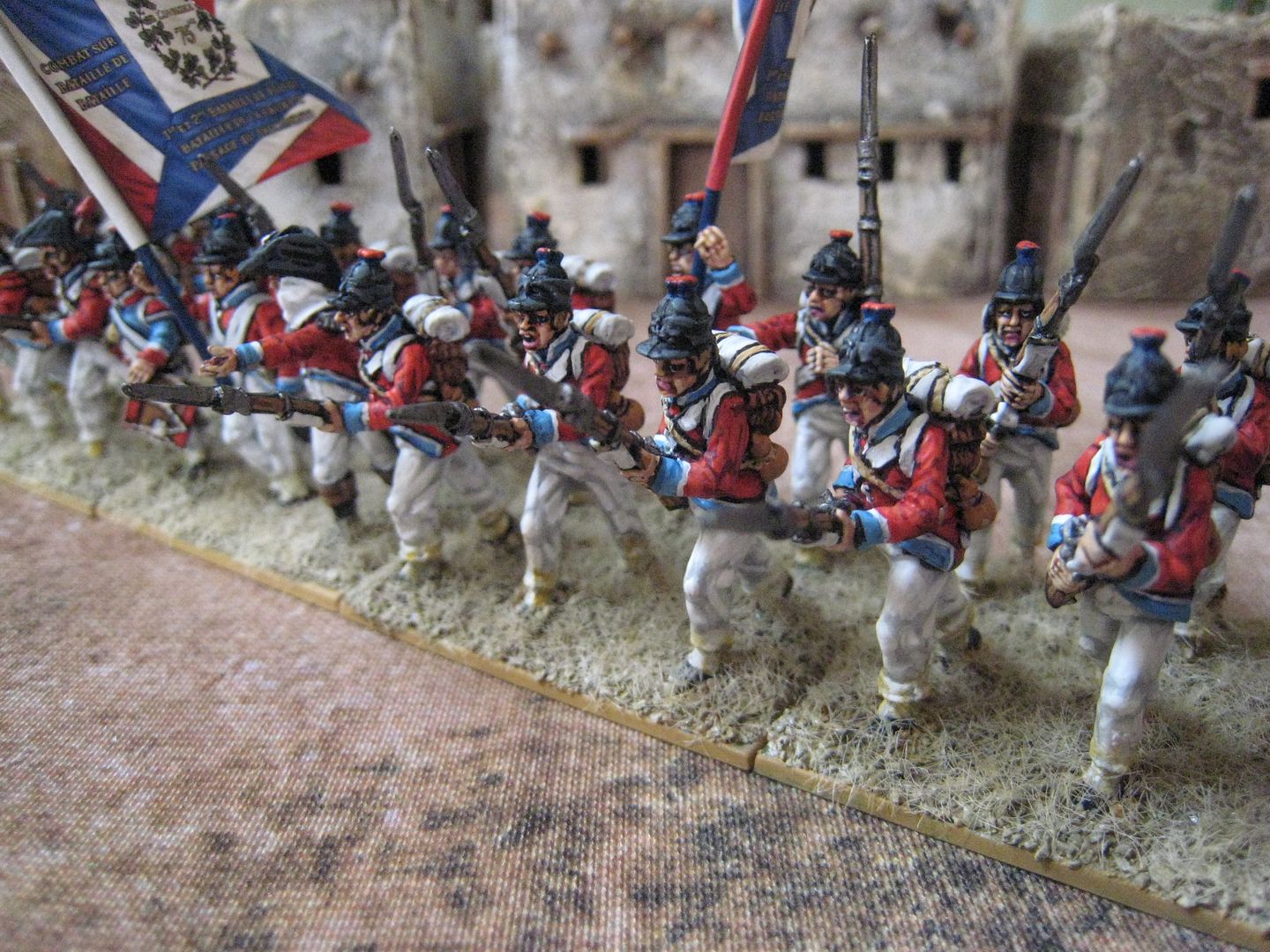
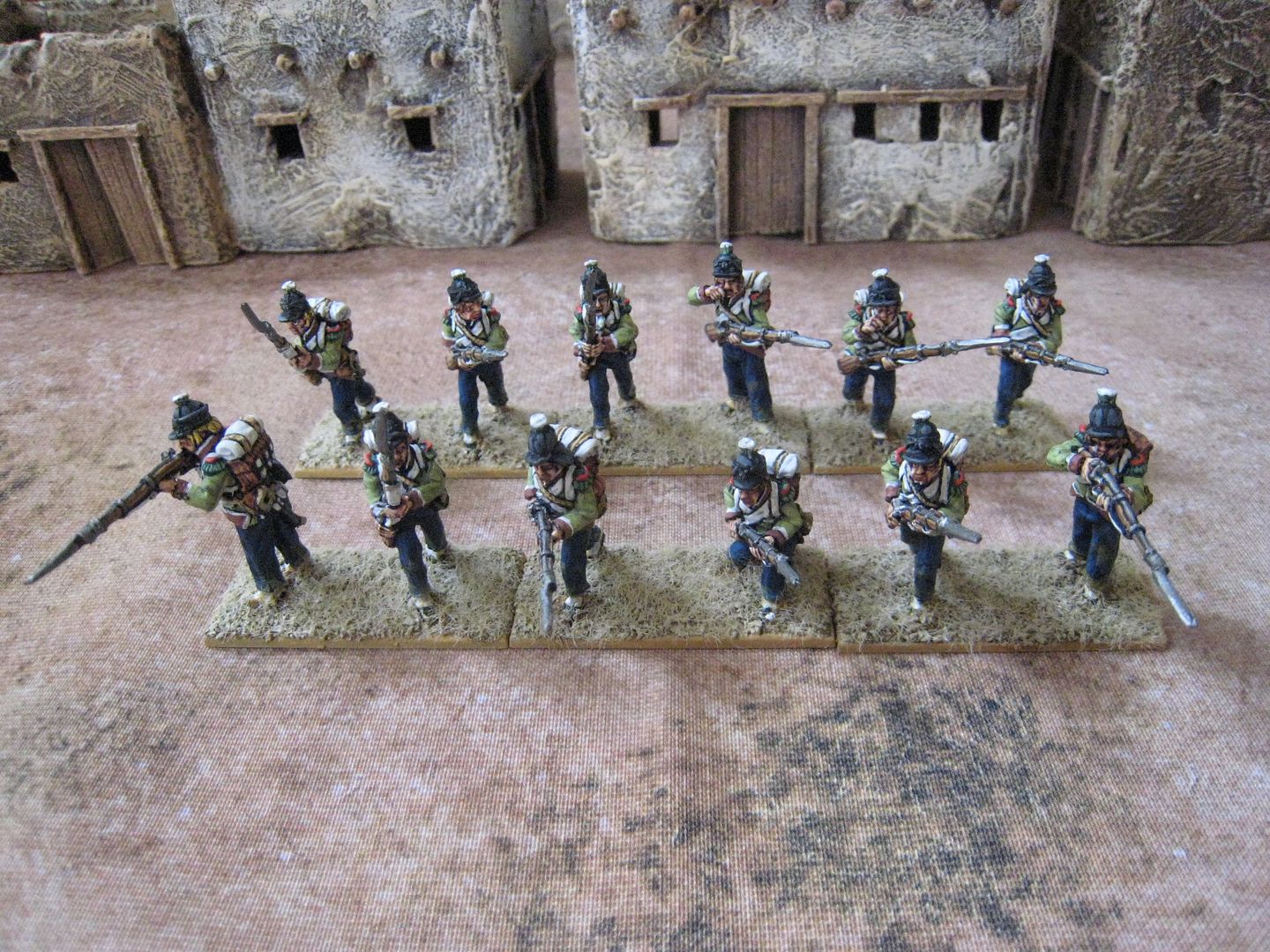
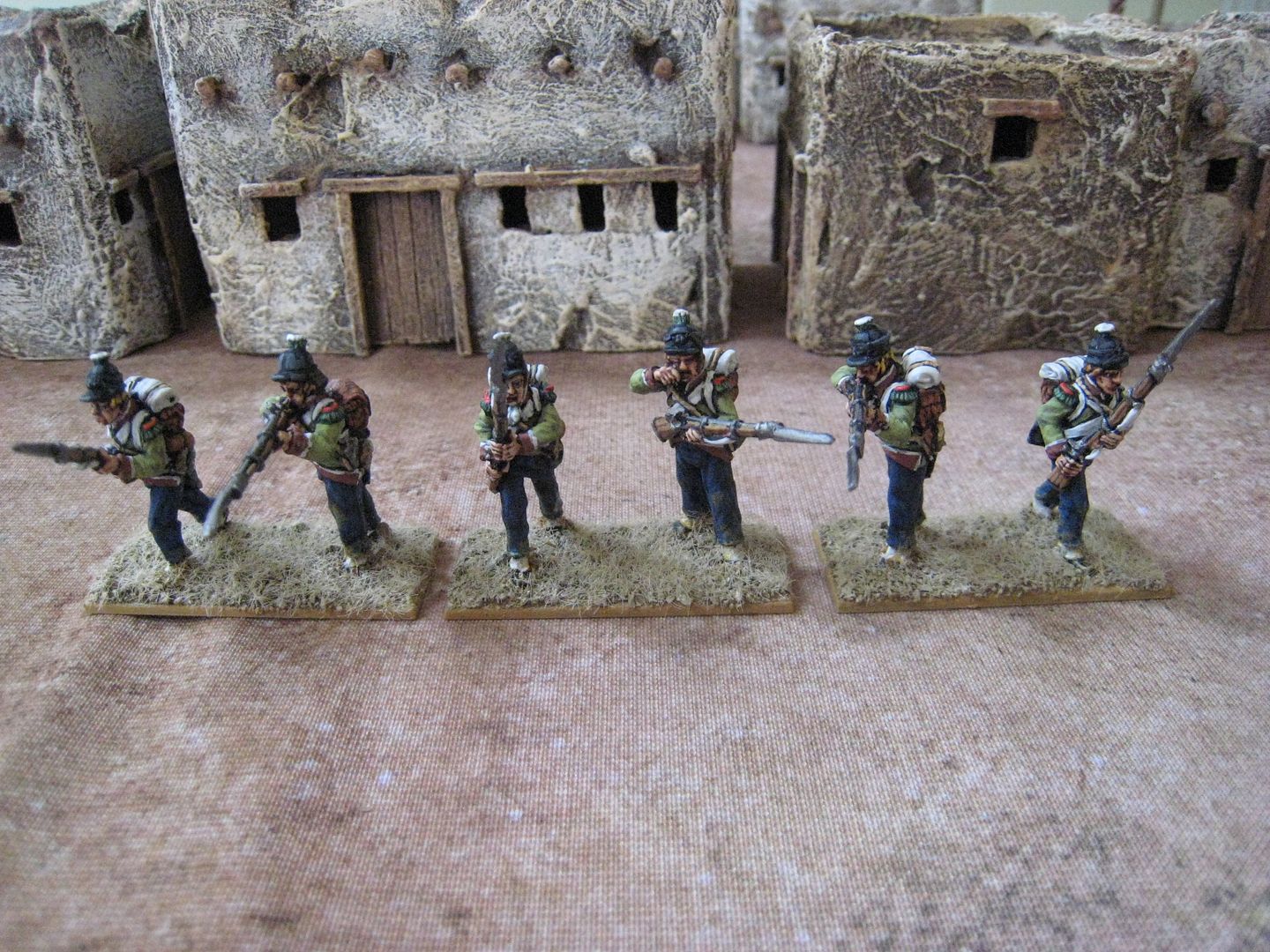
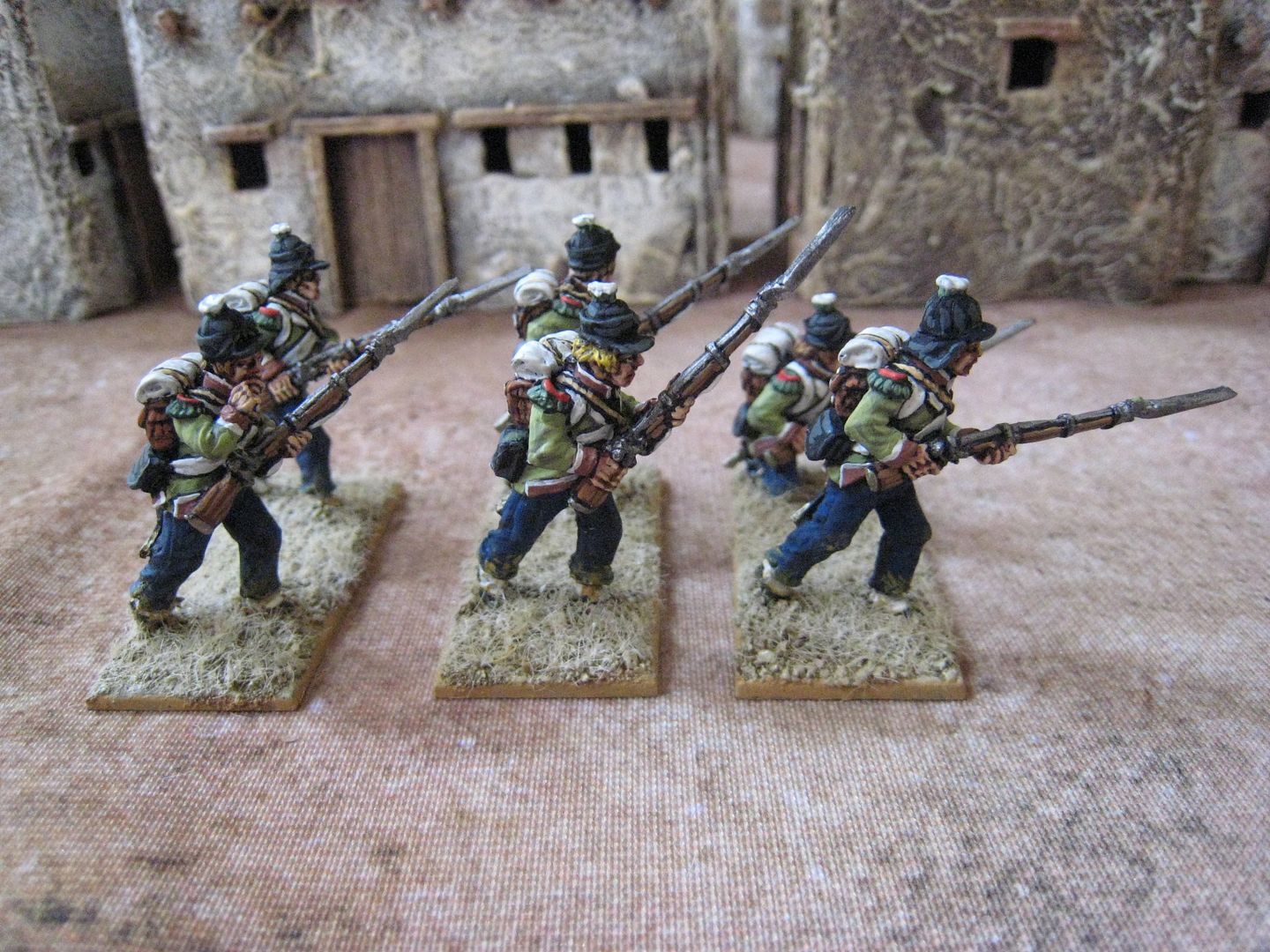
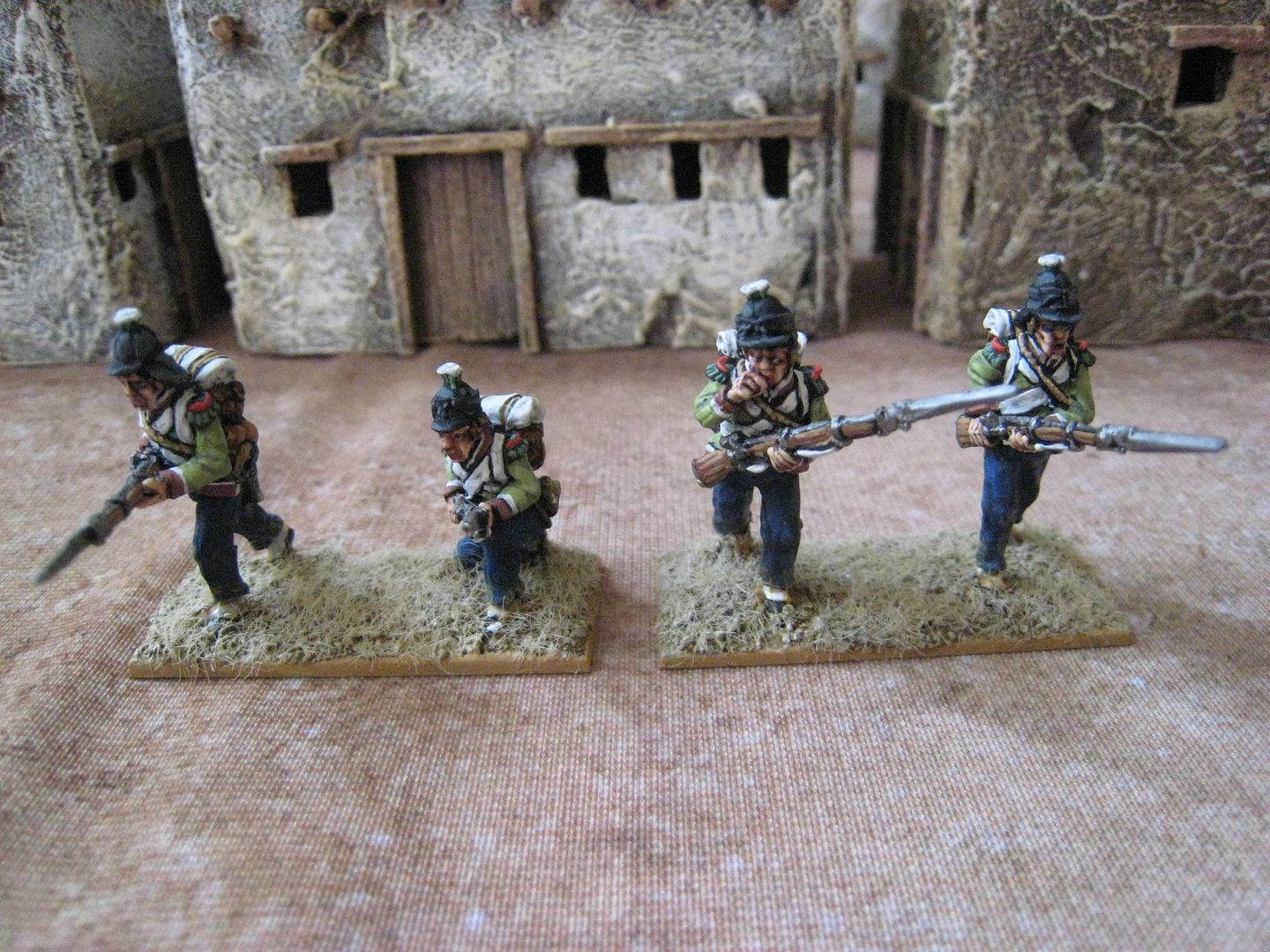

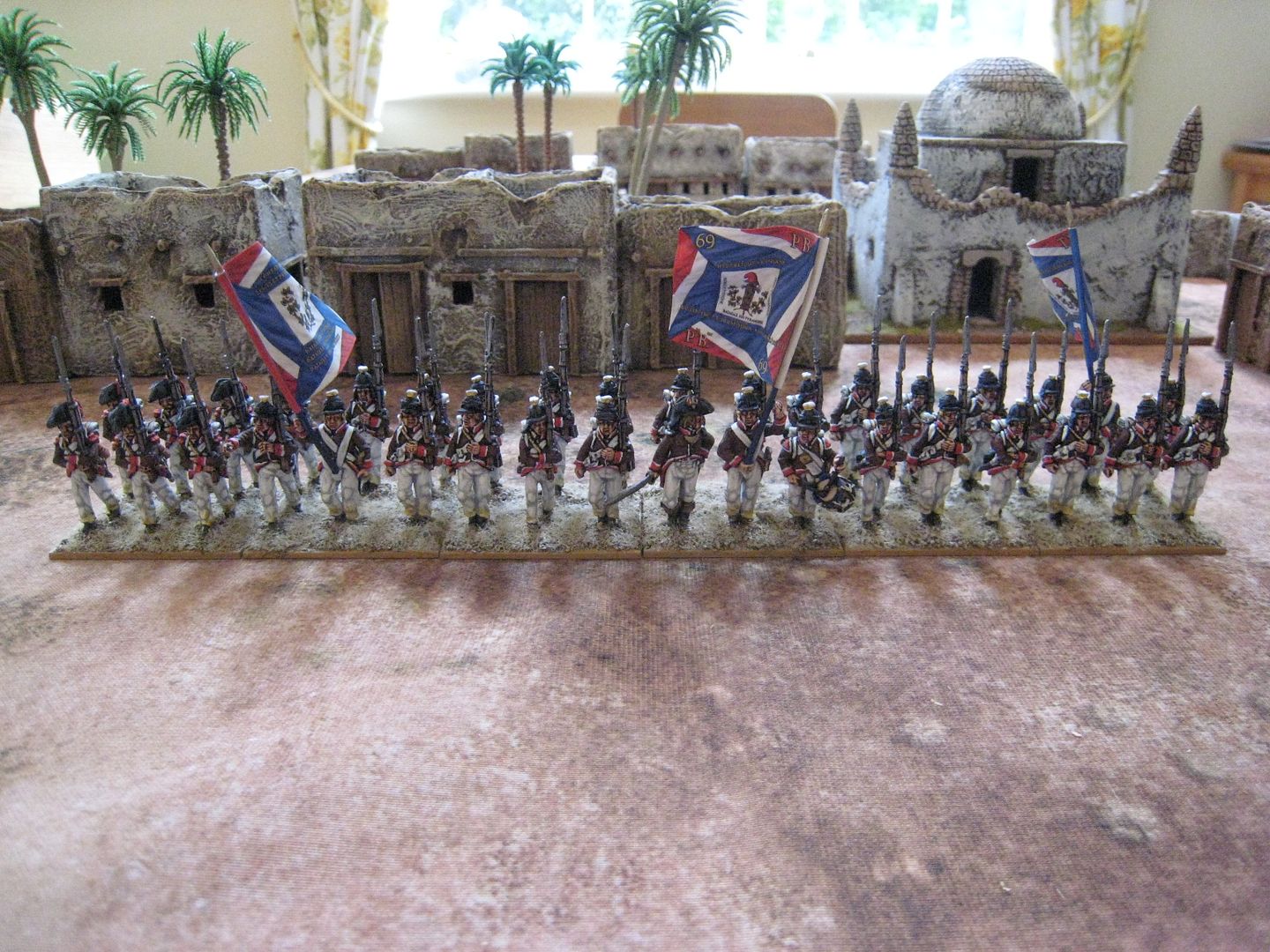
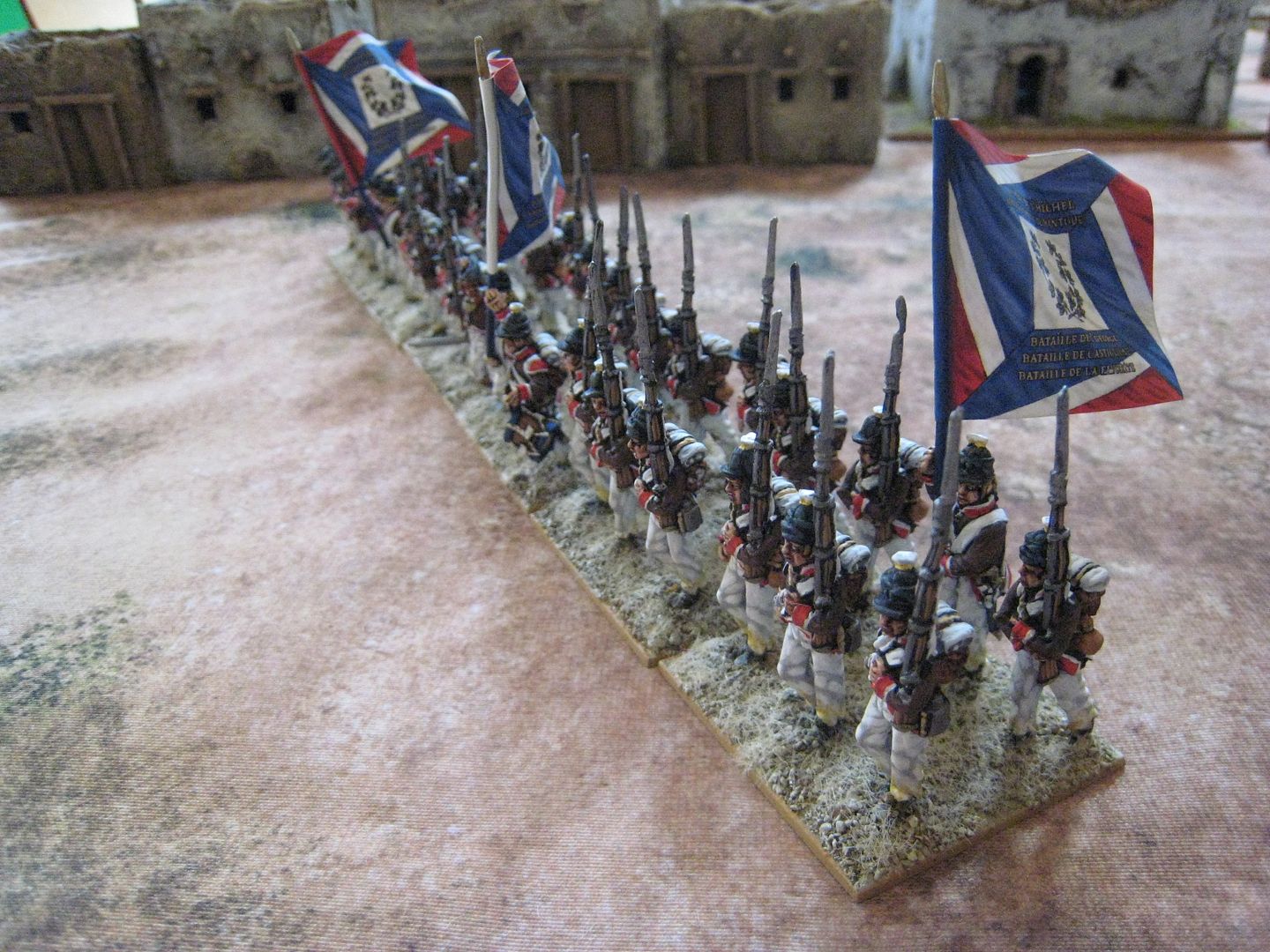

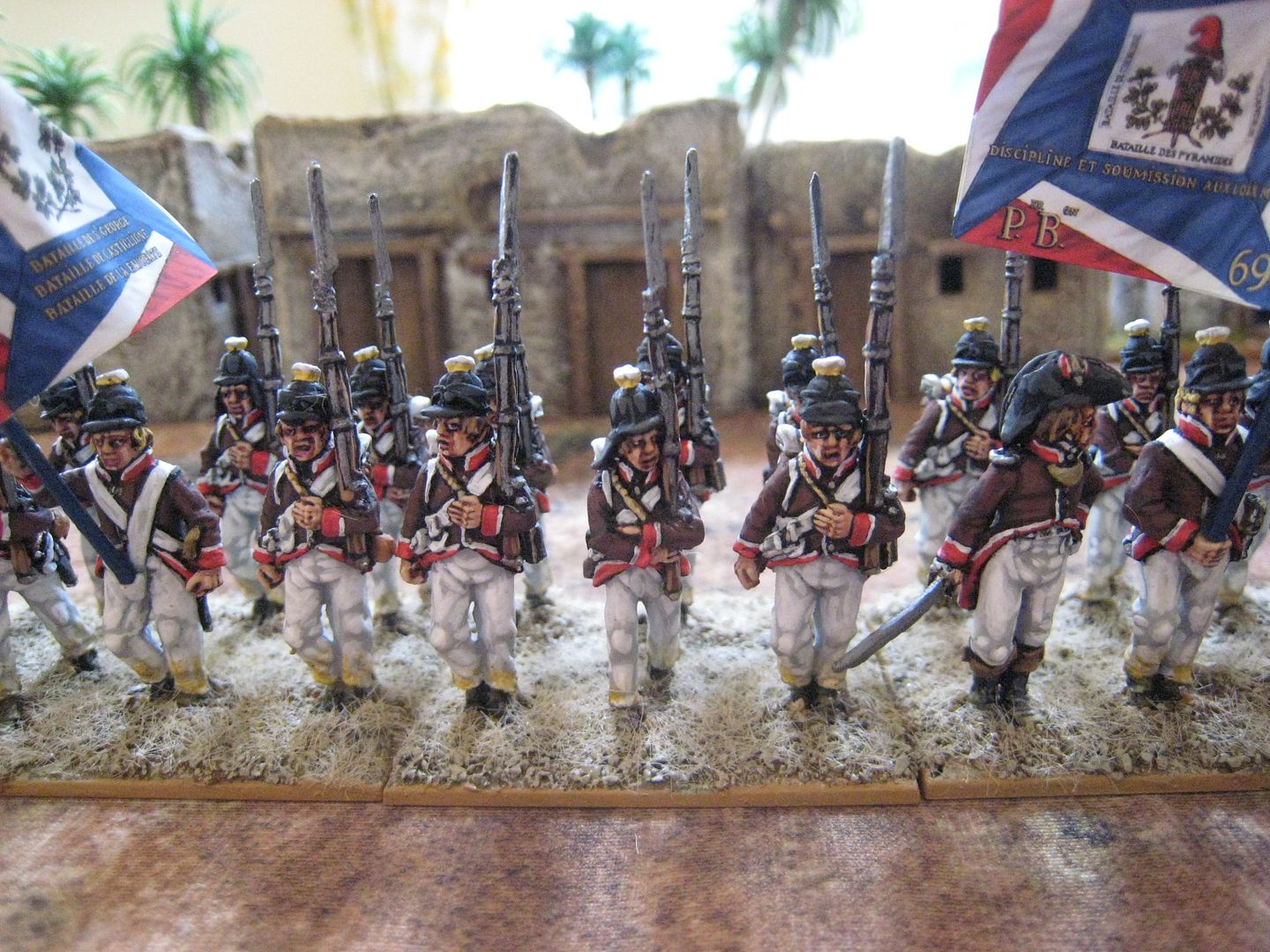
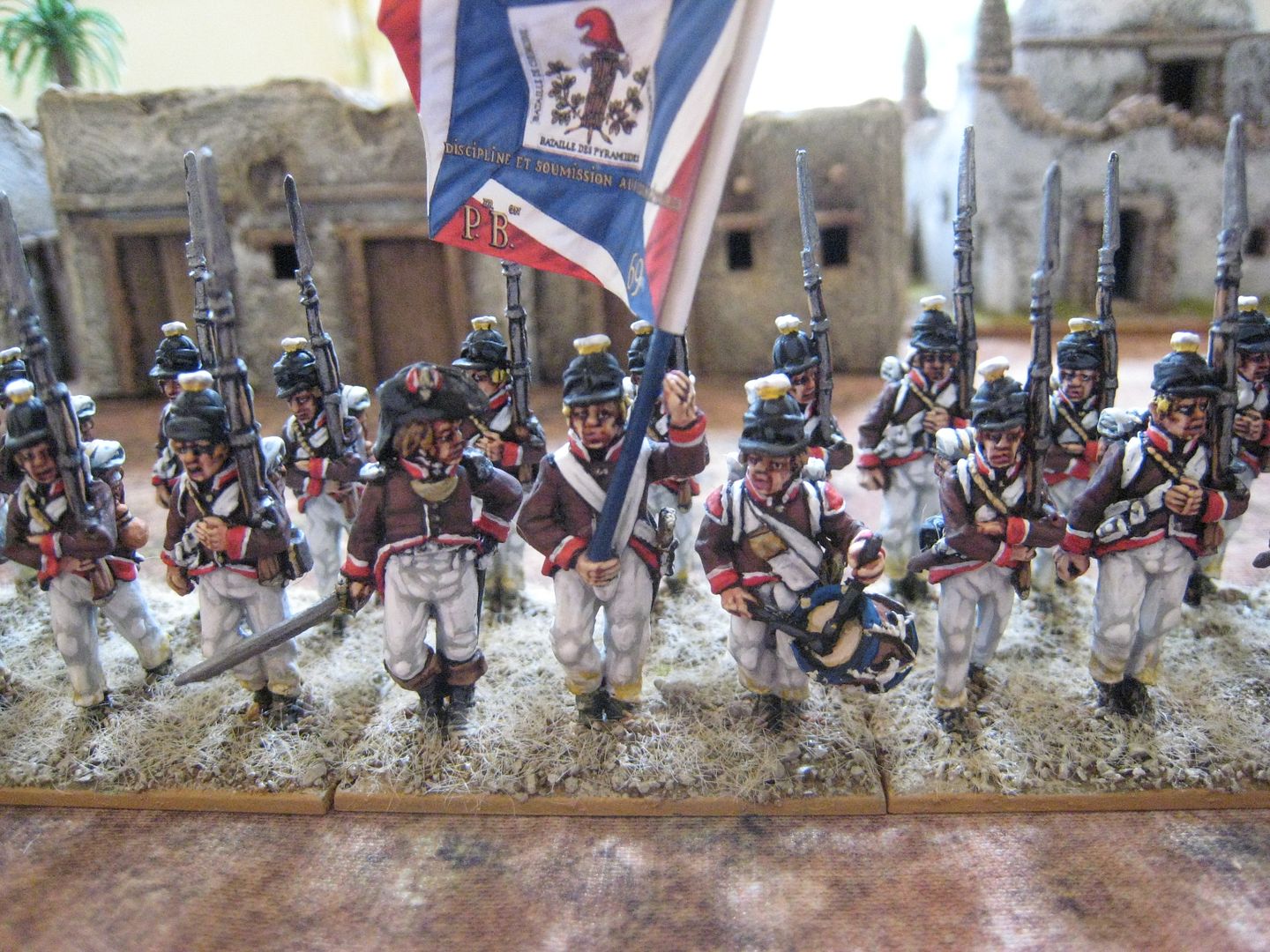


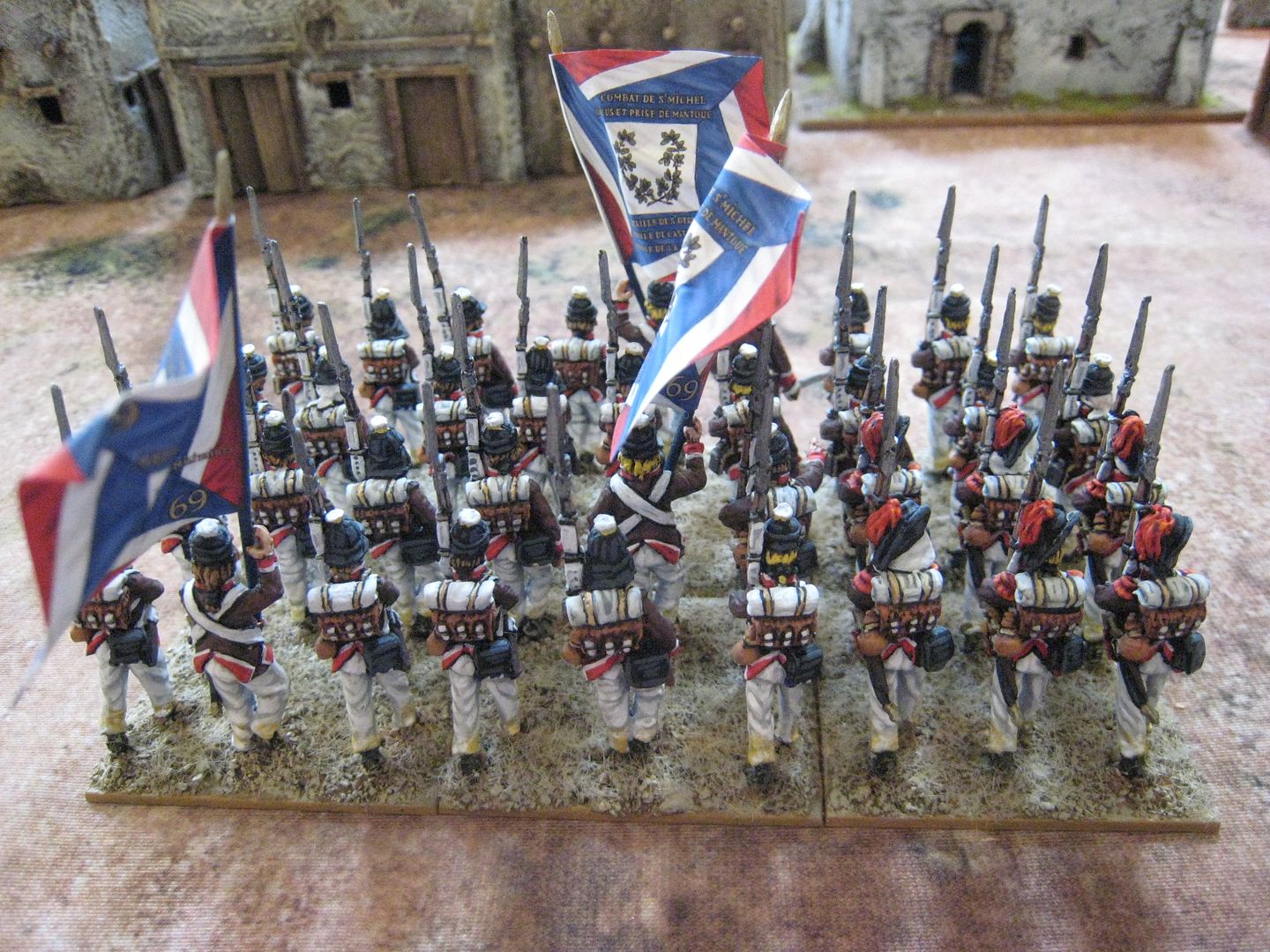
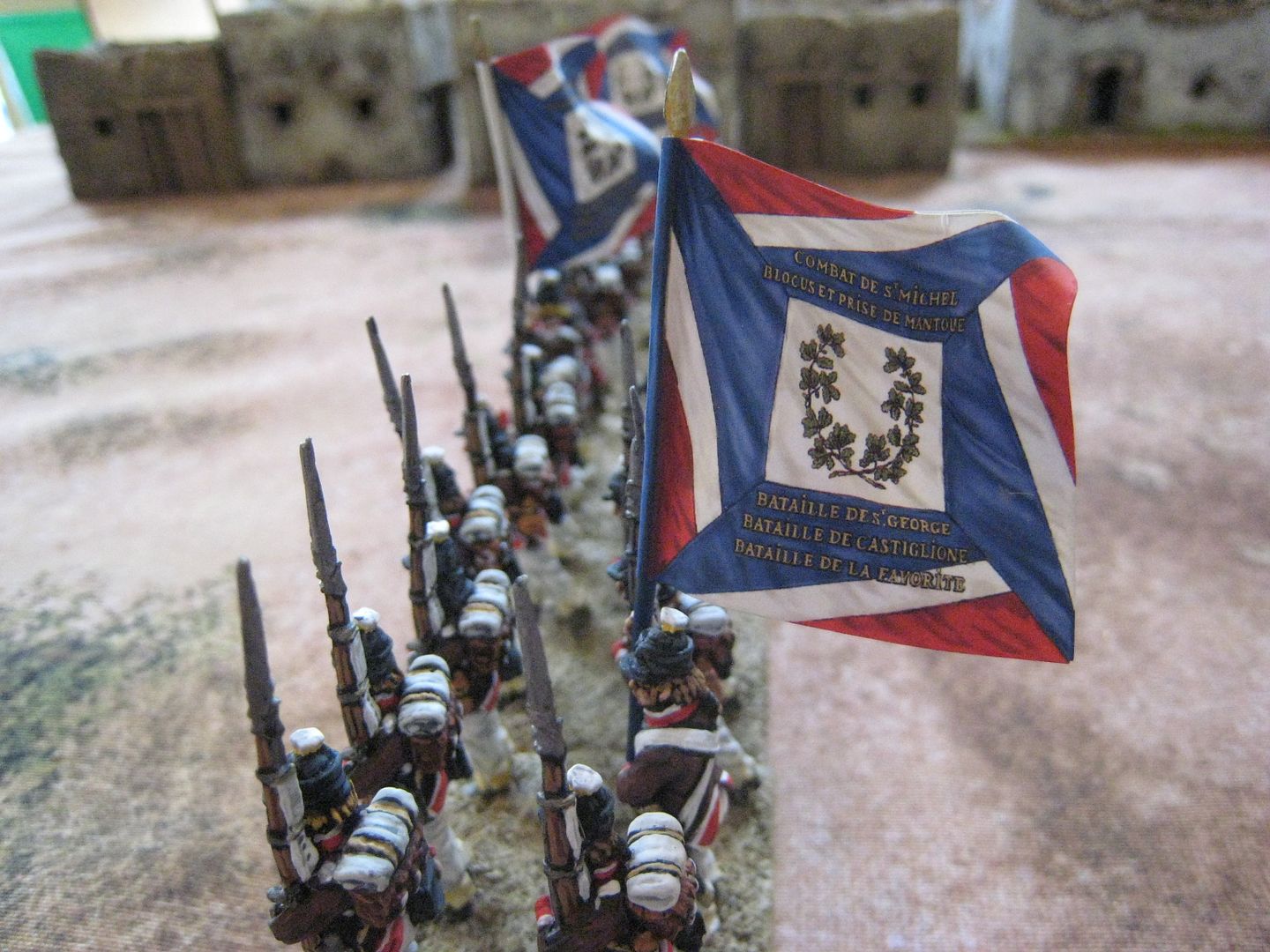
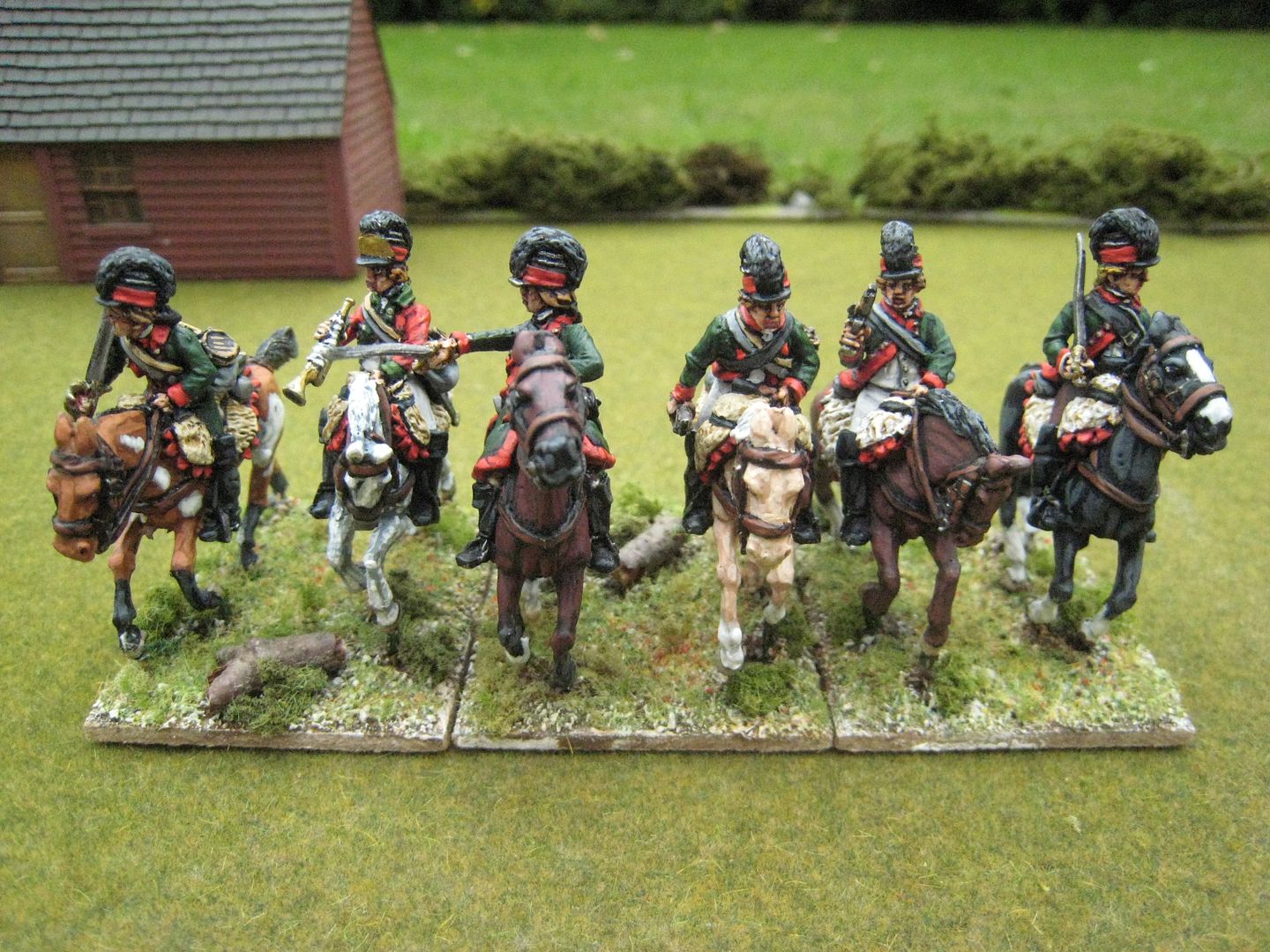

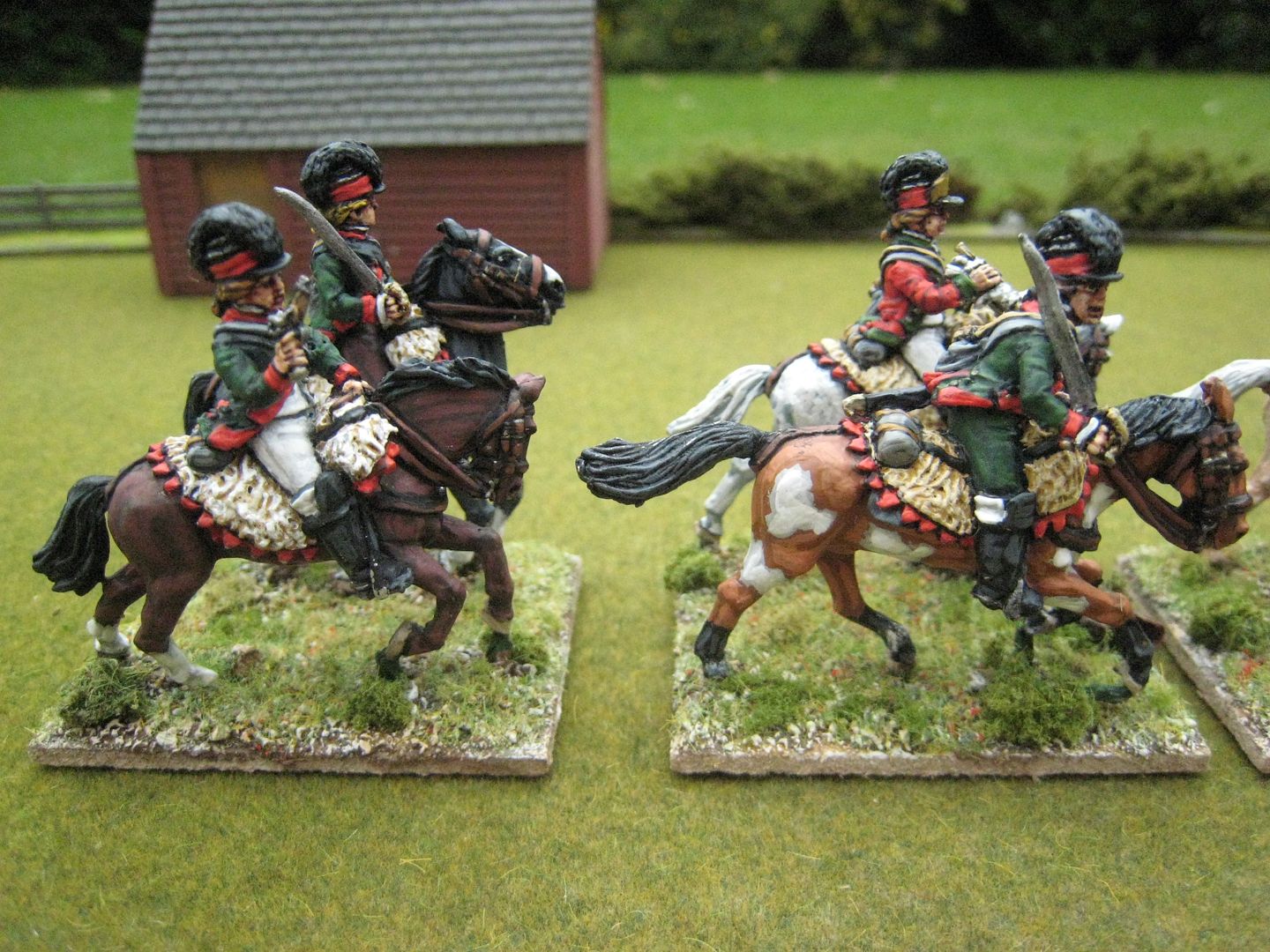
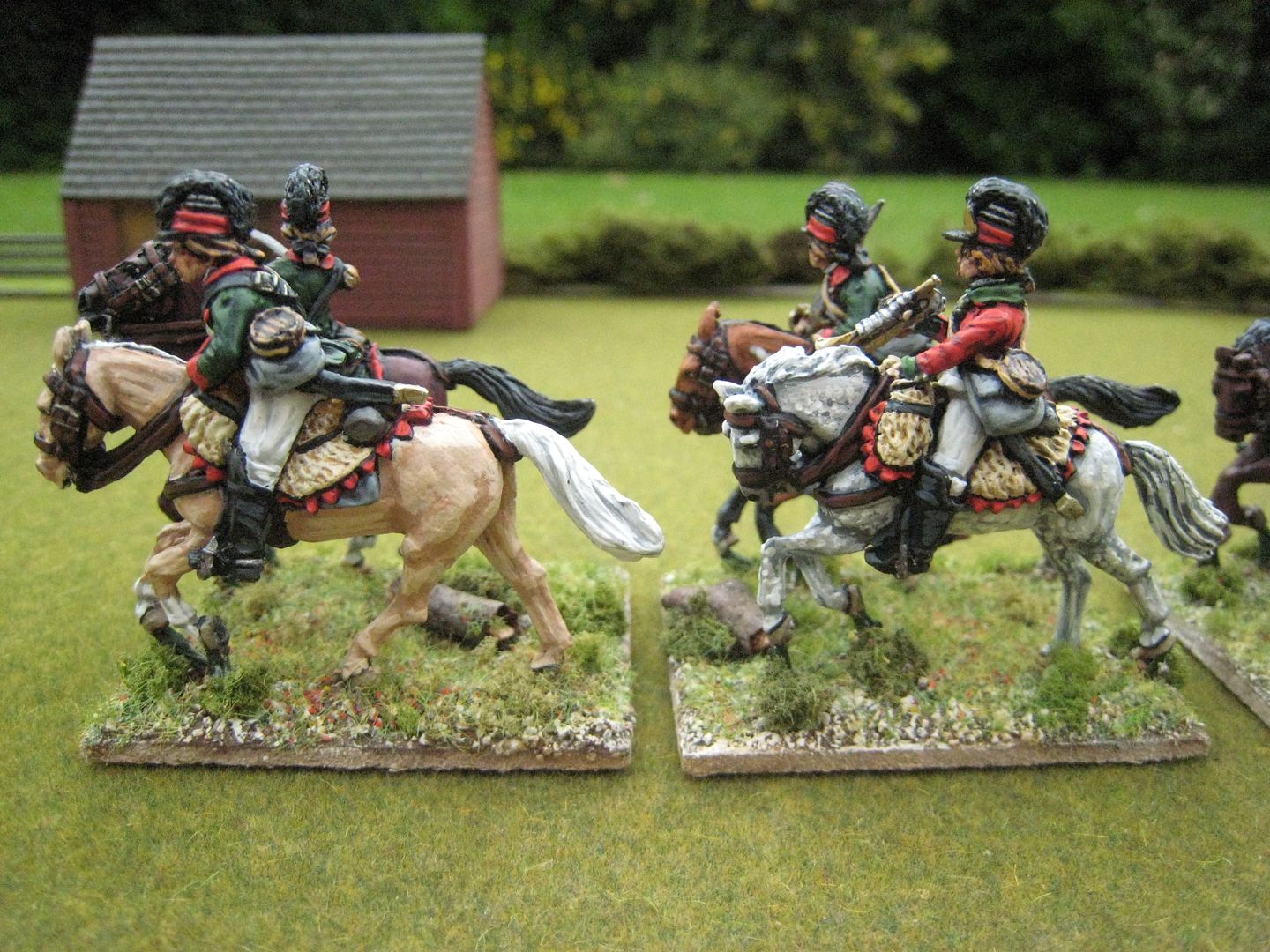
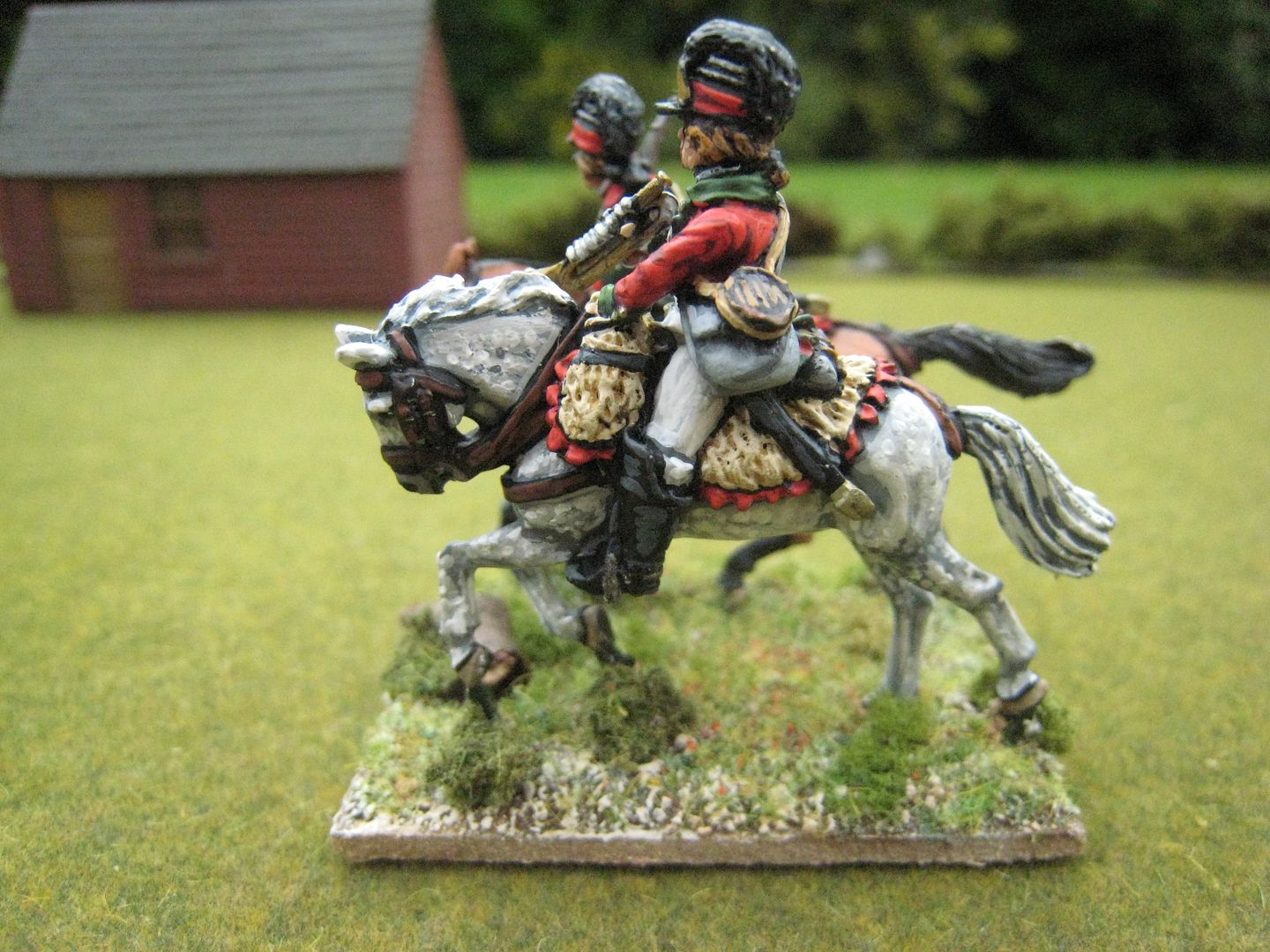
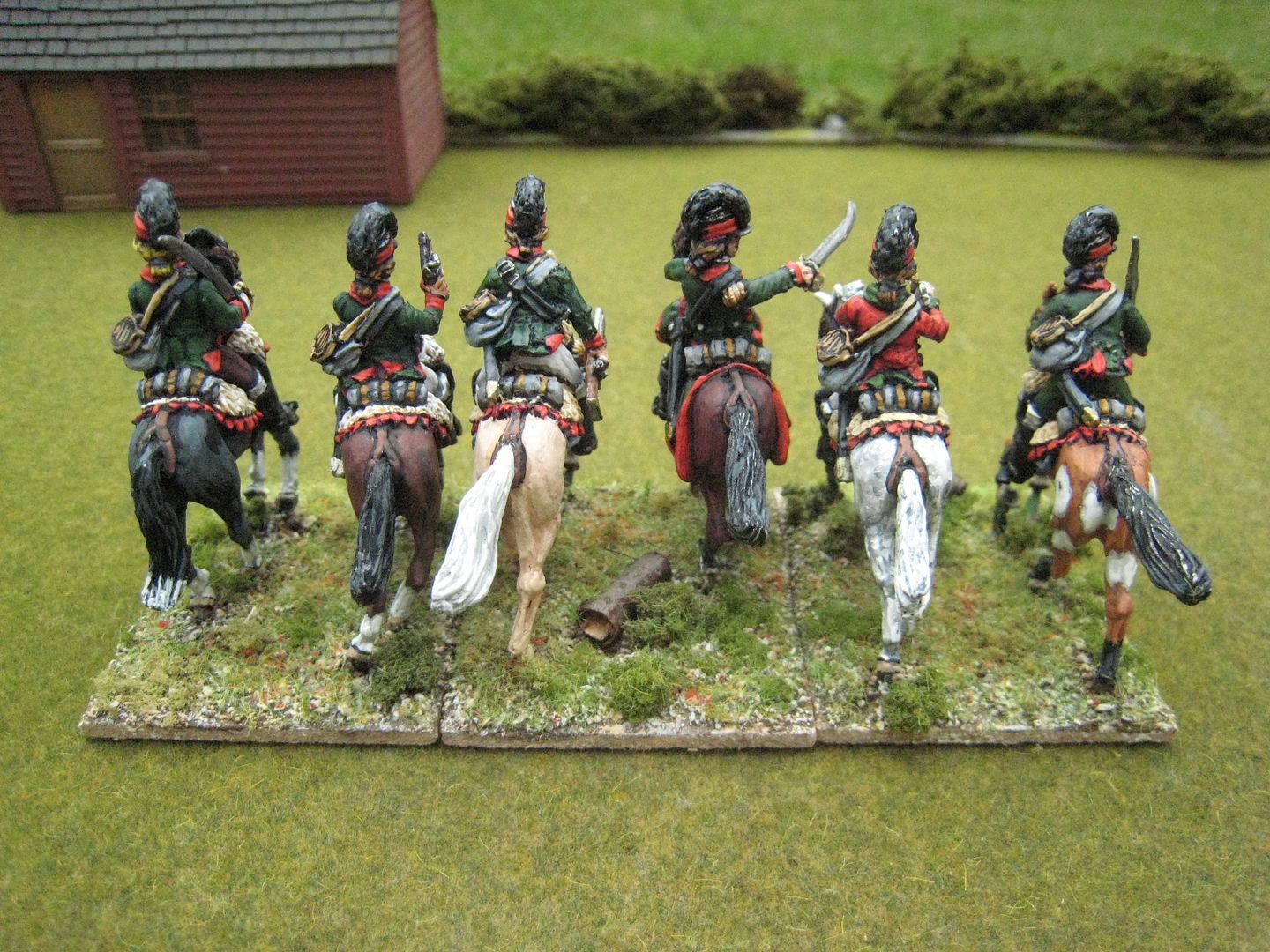

.JPG)




